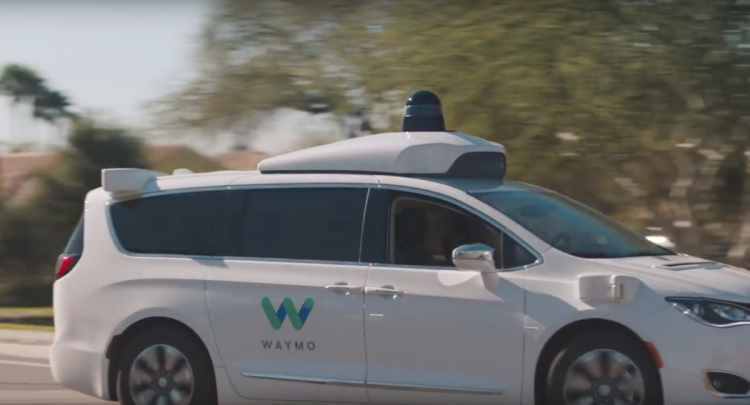Watch all the Transform 2020 sessions on-demand here.
Waymo CTO Dmitri Dolgov thinks 5G and next-generation cellular networks will be “an enabler” of the company’s autonomous car fleets, he told reporters this morning during a meeting at Waymo’s headquarters in Mountain View, California.
“I think it’ll help in terms of communication [and with] latency and bandwidth,” he said, noting that Waymo’s driverless Chrysler Pacifica minivans wirelessly exchange information about hazards and route changes via dual modems. “[Our cars] still have to rely on onboard computation for anything that is safety-critical, but … [5G] will be an accelerator.”
“5G” encompasses a host of evolving technologies, as VentureBeat’s intrepid 5G correspondent Jeremy Horowitz laid out in an explainer article last year. A small sampling includes new cellular antenna and modems, small cells, carrier aggregation (which enables radios to tune to overlapping channels simultaneously), Massive MIMO (which coordinate tens of antennas at a time), and QAM (which packs additional data signals into radio waves).
Moreover, there’s not just one “type” of 5G. Millimeter wave — often abbreviated “mmWave” — are ultra-high frequency radio waves in the 24GHz to 300GHz range that reliably transmit lots of information over relatively short distances (around 1,000 feet). They’re separate and distinct from sub-6Hz or 600Mhz and 2.5GHz, which are able to travel further than mmWave but offer only a fraction of the bandwidth.
June 5th: The AI Audit in NYC
Join us next week in NYC to engage with top executive leaders, delving into strategies for auditing AI models to ensure fairness, optimal performance, and ethical compliance across diverse organizations. Secure your attendance for this exclusive invite-only event.
Still, no matter the frequency and techniques in play, 5G networks hope to achieve latency in the sub-10ms to sub-1ms range, compared with 4G’s 20-70ms of latency. As for bandwidth, the 24GHz to 300GHz range theoretically offers around 6 gigabits per second.
So what does all that have to do with self-driving cars? The low latency could be a boon for decision-making in traffic scenarios requiring real-time communication over a network. And the bandwidth improvements are a natural fit for such cars, which record an estimated 1.4 terabytes to 19 terabytes of sensor data per hour.
Dean Bushey, general manager of self-driving car startup Voyage, explained the benefits in a recent interview with the Hill: “Right now, anything over a hundred milliseconds of latency is going to cause our car to disrupt. So anytime we can get lower latency, higher bandwidth … that’s where 5G comes in. Now we’ve solved the latency problem associated with getting commands, and video, back and forth between the car and the command station.”
Critics might argue that 5G is a long way from ubiquity, but so is Waymo One, Waymo’s commercial ride-hailing service, which hasn’t yet expanded beyond Phoenix, Arizona. And it’s worth noting that in the case of 5G, that’s beginning to change: Early networks and devices have already launched, and by the end of this year you’ll be able to get a 5G connection somewhere on almost every continent.
By the time Waymo One fleets are ferrying passengers through cities around the country, 5G will likely be closer to the rule than the exception. That seems to be what Waymo is anticipating, at least.


